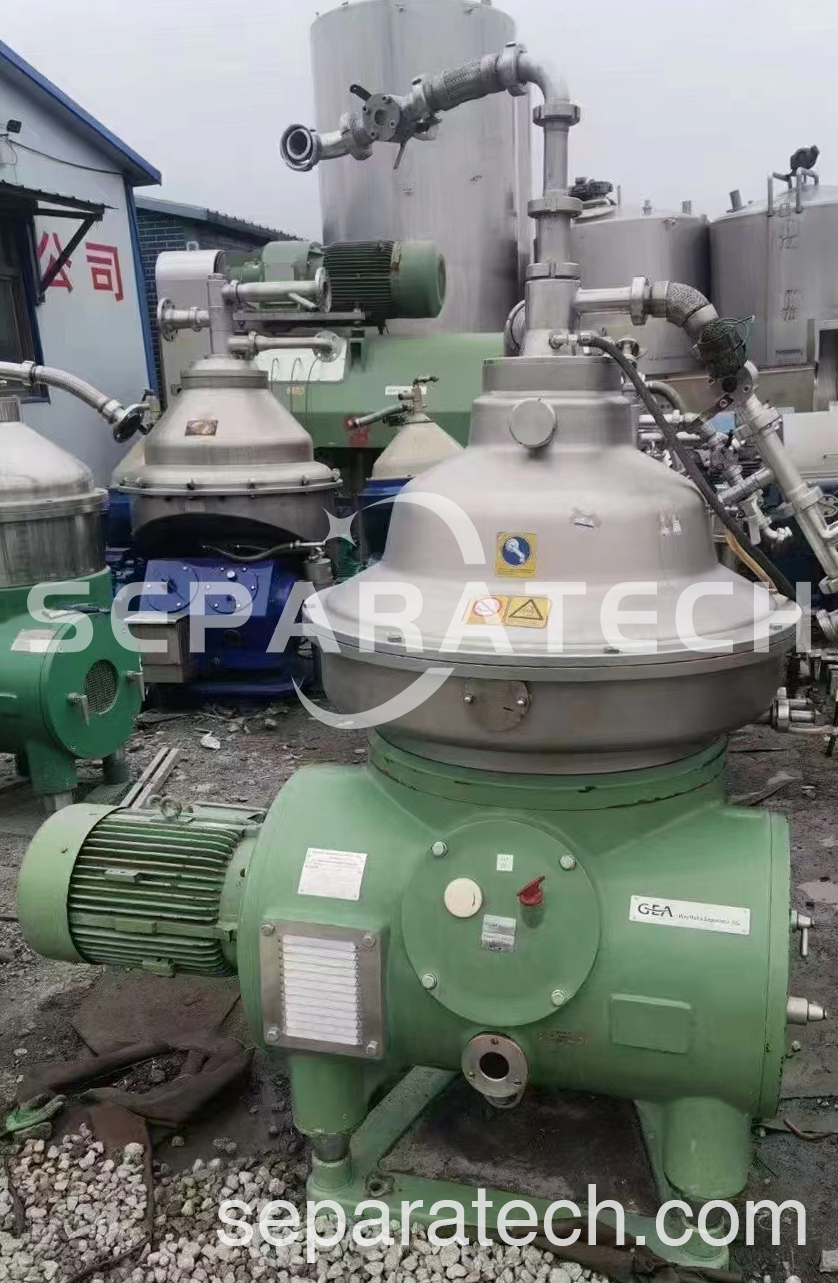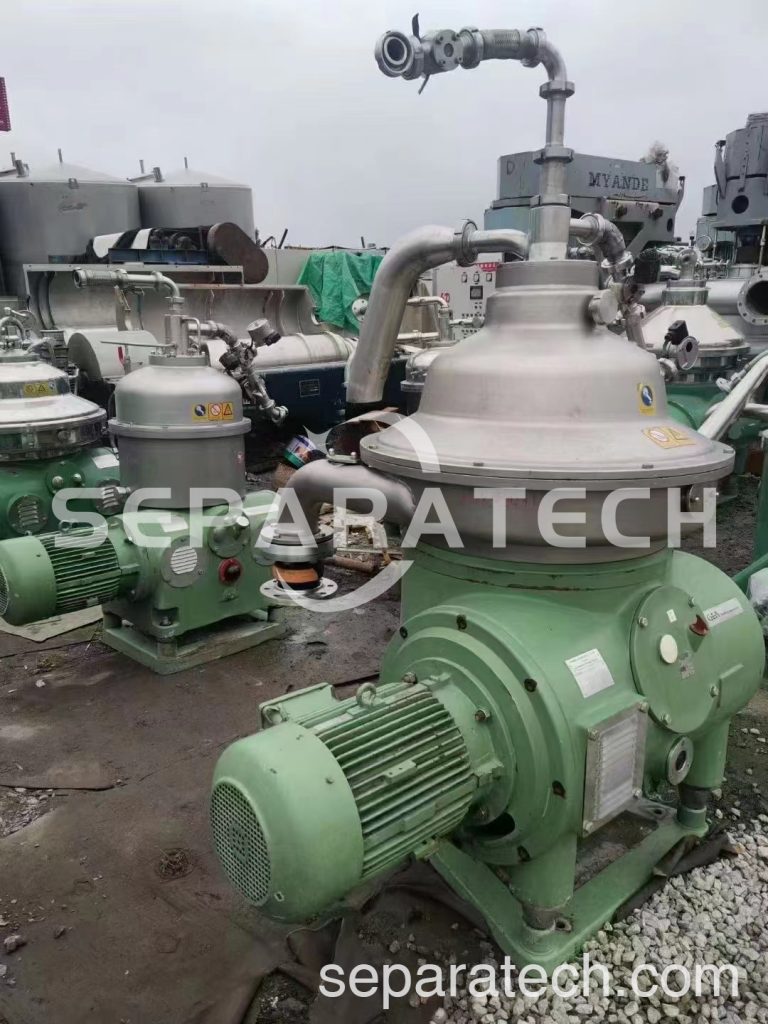Used GEA Westfalia Disc Separator RSA 60-01-076

Disc Separator RSA 60-01-076 Applications
Continuous degumming, neutralizing, dewaxing, and washing of fatty oils, such as various vegetable oils, lard, tallow, and fish oil.
This Disc Separator has been designed for use in the edible oil industry. The product is fed into the bowl through a closed-line system with hydrohermetic feed. The light liquid phase (clean oil) is discharged foamfree under pressure by a centripetal pump. The heavy liquid phase (soapstock or gums) is discharged by another centripetal pump. The separated solids are collected in the solids holding space and are ejected at preset intervals through ports. Partial and total ejections are possible. The self-cleaning bowl makes the machine suitable for fully automatic cleaning-in-place (CIP).
Technical specifications of Disc Separator RSA 60-01-076
Manufacturing year: 2000
Production capacity: 150 T/d
Bowl speed: 6460 rpm
Motor: 15 Kw
Feed temperature range: 0–100°C (32–212°F)
Operating principles of the Disc Separator RSA 60-01-076
The bowl is used to separate mixtures that consist of
– a liquid (oil) and
– pasty substances (soapstock or gums) with simultaneous removal of the solids contained in the mixture.
The product
• flows through feed 3 into the bowl,
• and is separated in disk stack 11.
The disk stack consists of a large number of conical disks placed on top of one another.
Due to the narrow interspaces between these disks
• the liquid is split up into thin layers and
• the settling path is minimized.
The light component
• flows to the bowl center,
• then flows to the centripetal pump chamber,
• is discharged under pressure by centripetal pump 7,
• and led off through discharge pipe 4.
The heavy component
• flows out of the disk stack to the periphery,
• flows over the separating disk to the centripetal pump chamber,
• is discharged under pressure by centripetal pump 6,
• and is led off under gravity through a discharge pipe.
The solids particles
• are flung against the underside of the disk above,
• slide outwards into the solids holding space 15,
• are periodically discharged through solids ejection ports 16.
Solids ejection is initiated by control unit 1.

